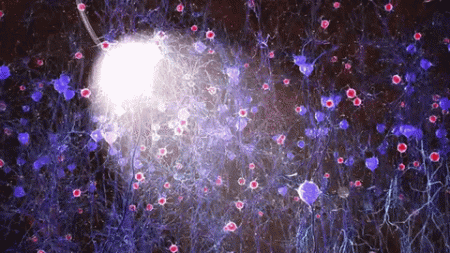December 8, 2016 – My wife’s grandmother and mother both suffered from Alzheimer’s. My mother had Alzheimer’s. For us the specter of the disease very much haunts the both of us as we reach our late 60s. I try and stay abreast of every clinical trial involving a new drug or therapy. The Solanezumab clinical trials have made headlines recently because of the poor results. And there are so many other trials in the works that one would expect any day now we will have an “eureka” moment announcing a cure?
But before you can definitively cure Alzheimer’s you need to know what causes it? The major risk factor for the disease is one none of us can avoid, aging. But other than that what’s the specific cause? When I go to Alzheimer’s sites I read a plethora of theories. Here are just a few causal links:
Is it amyloid plaques, proteins that abnormally accumulate and clump in Alzheimer’s patients’ brains?
Is it tau proteins that tangle up the neurons causing nerve cell death?
Is it the presence of the protein apolipoproteinE in some of us that predisposes us to the disease?
Is it the failure of the mitochondria in our brain cells that triggers it causing premature nerve cell death?
Or is it damage to the blood vessels in our brain that robs cells of oxygen and nutrients ultimately bringing on the symptoms?
Drugs that try to reverse what is described above as potential causes are in the works. But if they treat one of these many suspected agents of the disease and miss the others, the formula for clinical trial failure is high. Complicating matters is the blood-brain barrier, our body’s natural defenses against invasion of the brain by blood-borne pathogens.
So what if there were a far less invasive and non-chemical method of treatment? That’s what Professor Li-Huei Tsai and her team at Massachusetts Institute of Technology (MIT) are seeking. Their treatment tested on mice bred to exhibit Alzheimer’s involves exposing the animals to 40 hertz (cycles per second) flashes from LEDs in their cages. Treatment is one-hour daily. The end result is significant reduction in amyloid plaques and tau proteins. At 40 hertz the strobe effect is four times that of lights in discos. And the LEDs are not amplified to maximum brightness making them far less irritating.
The theory behind this light treatment is as follows:
Gamma waves in the brain are stimulated by the light flashes which impact microglia, inflamed cells found in Alzheimer’s patients, and important tools used by the brain to clear out toxins.
What’s next for the crew at MIT? Clinical trials on humans. The research team have set up a company, Cognito Therapeutics, to launch the treatment and have applied to the U.S. Food and Drug Administration to begin human trials.
States, Professor Tsai, “if humans behave similarly to mice in response to this treatment I would say the potential is just enormous because it is so non-invasive and so accessible….it’s a big if because so many things have been shown to work in mice, only to fail in humans.”
The study is published in the journal Nature.




















